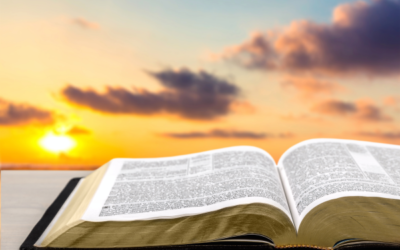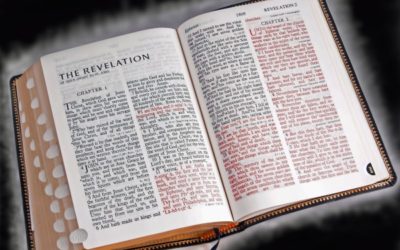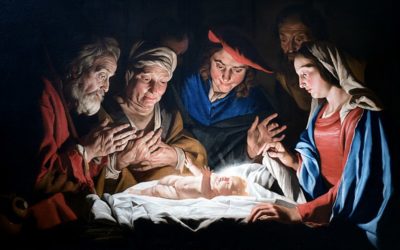Sections 135 and 136 of the Doctrine and Covenants were both written after the death of the Prophet Joseph Smith. Section 135 deals with Joseph’s martyrdom, and section 136, received by Joseph’s successor, Brigham Young, outlines a way forward for the Saints after they left Nauvoo.
Doctrine and Covenants 135
When a mob stormed the Carthage Jail on June 27, 1844, and martyred Joseph Smith in a hail of gunfire, Joseph’s brother Hyrum died with him. Two others were in the room with Joseph and Hyrum at the time, and they both survived. One was John Taylor, a member of the Quorum of the Twelve, who would go on to become the third President of the Church. The other was Willard Richards, also a member of the Twelve, who was serving at the time as the Church Historian and Recorder.
Both John and Willard witnessed the martyrdom, and both were wounded, John quite seriously, and Willard just slightly. Both men left accounts of their experience.
As the Joseph Smith Papers website explains, section 135 (numbered section 111 when first published in the 1844 Doctrine and Covenants) “is believed to have been written by John Taylor, the publisher of the 1844 Doctrine and Covenants and an eyewitness to the murders. It was composed after most of the work on the volume had been completed. Only by using a smaller typeface than what appears in the rest of the volume were the printers able to fit this last section into the available space following section 110 and preceding a brief three-page ‘index.’”
To see the original printed text, click here. For a more full account of the martyrdom written later by John Taylor, click here.
Willard Richards also left an account of the martyrdom titled “Two Minutes in Jail” and published in the Times and Seasons, the Church’s newspaper at the time in Nauvoo. To read his account, click here.
For information on the Carthage Jail and virtual tours that recount the martyrdom, click here.
A key statement in section 135 begins verse 3: “Joseph Smith, the Prophet and Seer of the Lord, has done more, save Jesus only, for the salvation of men in this world, than any other man that ever lived in it.” Although the verse mentions a few things Joseph did in his lifetime, the perspective of time gives us a fuller understanding.
President Russell M. Nelson has said, “Our message to the world is simple and sincere: we invite all of God’s children on both sides of the veil to come unto their Savior, receive the blessings of the holy temple, have enduring joy, and qualify for eternal life.” If we consider Joseph Smith’s contributions to temple work alone, John Taylor’s statement becomes clear.
Although temples have existed throughout the centuries, no temple capable of administering the full ordinances required for exaltation existed after the Great Apostasy removed priesthood authority from the earth. Even when fully functioning temples did exist, they were small in number. Joseph established the foundation on which more temples exist today than ever before in human history. The work he established will continue on throughout the Millennium and will be the means of providing opportunities for eternal life to more people cumulatively than have had that opportunity in the past.
Doctrine and Covenants 136
Following the death of the Prophet Joseph Smith, the Church sustained Brigham Young and the members of the Quorum of the Twelve over which he presided to lead the Church. They were the only group in possession of all the keys required for the work of the Church, including temple work.
For more on this succession, click here and here.
After the Saints left Nauvoo, they still had many questions about how to organize for their move to the west that Joseph Smith prophesied and helped plan in the Council of Fifty he established. Section 136 is the revelatory response to many of their questions.
For further historical background on this section, click here.
In this revelation, the Lord told His people how to organize themselves “in their journeyings to the West . . . under the direction of the Twelve Apostles” (verses 1‒3, 12‒15). Critical to moving the Saints westward was their covenant to “walk in all the ordinances of the Lord,” care for those in need, and use all their “influence and property to remove this people to the place where the Lord shall locate a stake of Zion” (verses 4‒10).
If they did this “with a pure heart, in all faithfulness,” they would be blessed (verse 11) and directed to “a land of peace” (verse 16). As for the enemies that had driven and persecuted them, the Lord said to “fear not . . . for they shall not have power to stop my work ” (verse 17), “for they are in mine hands and I will do my pleasure with them” (verse 30). And as for Zion in Missouri, the Lord assured them, “Zion shall be redeemed in mine own due time” (verse 18).
The Lord then reiterated laws and principles that would help bring them peace and contentment (verses 19‒21, 23‒29, 32‒33).
Calling the Saints assembled in their winter quarters along the Missouri River and elsewhere “the Camp of Israel” (verse 1), the Lord reminded them, “I am he who led the children of Israel out of the land of Egypt; and my arm is stretched out in the last days, to save my people Israel” (verse 22).
The Lord did not promise them their way would be easy. “My people must be tried in all things,” He said, “that they may be prepared to receive the glory that I have for them, even the glory of Zion; and he that will not bear chastisement is not worthy of my kingdom” (verse 31).
After recounting how apostates and intolerant neighbors had driven them from the United States, the Lord assured the Saints that those who persecuted them and murdered the prophets would be punished for their iniquity unless they repented (verses 34‒36).
As for the martyred Joseph Smith, the Lord told the Saints not to worry. Joseph laid the foundation, “was faithful; and I took him to myself” (verse 38). “Many have marveled because of his death,” the Lord acknowledged, “but it was needful that he should seal his testimony with his blood, that he might be honored and the wicked might be condemned” (verse 39).
The faithful who yet remained, however, had “received my kingdom” and would be blessed if they continued faithful (verses 40‒42).
Credit for image at top of page: Stock photo from depositphones.com



